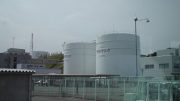It was 70 years ago today that the US dropped the world’s first atomic bomb on Hiroshima in Japan. Three days later, on 9 August 1945, a second bomb was dropped by an Americans airplane on Nagasaki. Today the world remember those days, those victims (initially more than 80,000 people in Hiroshima and 74,000 in Nagasaki) and the enduring consequences of those blasts. But even this (apparently) undeniable truth is disputed.
According to the World Nuclear Association “in Hiroshima, of a resident civilian population of 250 000 it was estimated that 45,000 died on the first day and a further 19,000 during the subsequent four months. In Nagasaki, out of a population of 174,000, 22,000 died on the first day and another 17,000 within four months”.
If you look at it now, you can mark those moments, those actions, as proof of human madness. At the time US President Harry Truman did not show any sign of regret for his choices, on the contrary he seemed only too proud to describe the weapon features – more than 2,000 times more powerful than the largest bomb used to date – and determined to outpace the Germans in the Atomic race. There was a war going on and the magnitude of the devastation caused by those two Atomic bombs prompted the Japanese government to surrender to the Allies five days later, on 14 August 1945. Mission accomplished. But at what price?
Some keep saying an enduring peace was those bombs main legacy. Points of view, not unanimously shared. The only evident legacy were malformed children and people who died of cancer due to the bomb radiation trail, which lasted enough to add more victims to Hiroshima’s final death toll. ONE






Be the first to comment on "Hiroshima and the Nuclear peace myth"